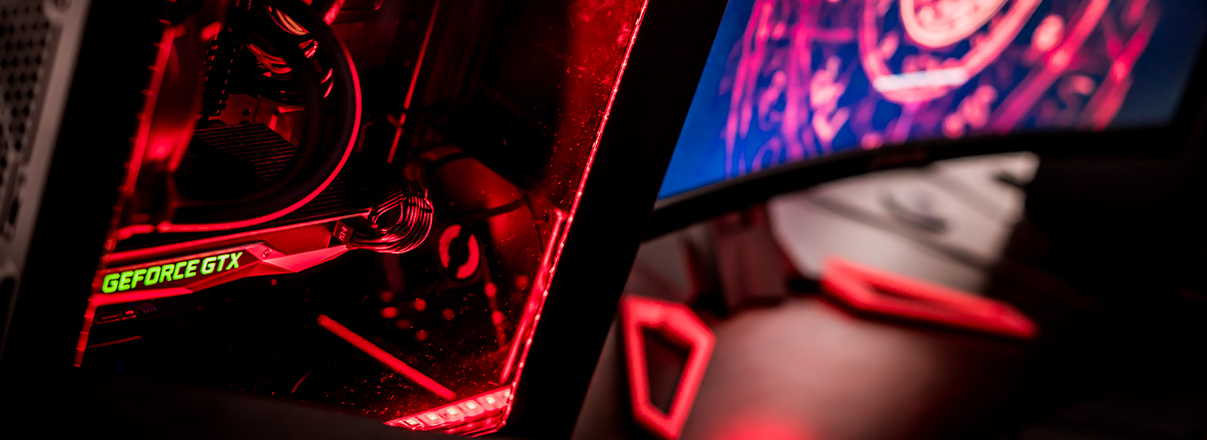 It’s a question that actually comes up more often than not on our forums : ” Which graphics card is best to run modded Fallout 4? ” It’s a good question, too.Games that run mods often tend to perform worse than stock versions for various reasons.So what should you, as a modder, look for when buying a GPU?
It’s a question that actually comes up more often than not on our forums : ” Which graphics card is best to run modded Fallout 4? ” It’s a good question, too.Games that run mods often tend to perform worse than stock versions for various reasons.So what should you, as a modder, look for when buying a GPU?
Given the recent instability in GPU prices this year thanks to crypto currency mining, this is a hard question to solve, it’s no longer prudent to just buy the highest end GPU on the market and call it a day, we need to more fully explore the reasons why games slow down when we throw mods at them.
Graphic Enhancement Mods
There are various different types of mods available for most games, but the most taxing in terms of GPU are mods that enhance the graphics in some way or another.The most common are high resolution texture packs, mods that replace the in-game textures with much higher resolution versions that make the game world look cleaner and sharper.The problem with these types of mods isn’t one of raw GPU power: it’s one of memory.The higher resolution textures you tend to use, the more memory you’re going to want on your graphics card.
These days, 2GB really isn’t enough to enjoy high resolution textures at high screen resolutions.The minimum amount of GPU memory should be at least 4GB, but if you intend to load in 4K quality textures for ultra-HD gaming, then you’re going to want more.
The other type of graphical enhancement mod could be additional effects such as ENB or shader enhancements.For the most part, memory is also more important than raw GPU power in these scenarios.One area where more GPU power might be preferable is mods that enhance the detail of models, such as static meshes or NPC models.
The more detail that is put into these models, the more GPU power is going to be required.
In any case, you’re going to want a graphics card that supports features that take work away from the CPU and puts it onto the GPU, such as PhysX (which provides physics calculations) or NVIDIA’s CUDA technology.On-board graphics solutions, such as those included with Intel CPUs, are likely to struggle with these types of mods, as the CPU drives both the game logic and the graphics, and graphics memory is shared with main system memory.
Mods That Give You More
Adding new things to your game, such as more trees, extra AI, new buildings or areas, for example, go a long way to add to the immersive feel for the game.The problem, though, is they also push the game beyond it’s intended performance limits.
The more models or objects that are placed into a scene, the harder the GPU has to work to render these for every frame.Overloading your game with extra models creates extra work for the GPU, as it has to calculate lighting, shadows, physics and more.While this may also add extra work for the CPU in the case of additional AI characters, for example, the main slow-down here is going to be raw GPU power, although again having plenty of extra graphics memory for any additional textures and objects is also important.
Games that support technologies such as NVIDIA’s CUDA or AMD’s Stream will benefit here.
You should look for a card that has a high GPU boost clock speed, but also a high number of CUDA cores.
Overclocking Your Game
Overclocking your graphics card sounds scary, but it really isn’t.You remember the first time you installed a mod for a game? Do you remember that moment of apprehension where you were worried you might break the game forever? Graphics card overclocking is no more difficult than installing a mod for a game: infact, it’s probably a lot easier.There’s also little danger of doing any damage to your hardware.
Picking a graphics card that is designed for overclocking is a must for gamers looking to mod their games, in my opinion.If you’re going to push the limits of the game you’re playing, you’re also going to need to push the hardware that you’re running on.
Graphics cards that are designed with overclocking in mind will often include tools in the box such as ASUS’ GPU Tweak or MSI’s Afterburner, and will still honor any warrantee or guarantee, even if these tools are used.
Overclocking your card is often a fairly simple process.All it really involves is pushing up the CPU clock by around 10Mhz at a time, running a benchmark for ten minutes, and then repeating the process until you start to see glitches or artefacts, or your game / pc crashes (it sounds scarier than it is, honestly).You then dial the clock back a bit to give yourself some headroom, then repeat the process with the memory clock speed (although by 100Mhz instead of 10Mhz), until you reach the same conclusion.There are more advanced overclocking capabilities too, such as increasing voltages, but I don’t recommend these unless you’re confident in what you’re doing.
Most graphics cards have GPU’s and memory chips that are capable of much better performance than they’re designed for.Be warned, though, that your mileage will vary.
The “silicone lottery” means your GPU might not overclock very far, or at all, whereas other GPU’s of exactly the same brand and model may overclock significantly higher.It all depends on how lucky you got when your card was assembled.
Here’s a rather young-looking Linus Sebastian to explain the process in more detail.While this video is a little old, the principles and software really have not changed in the intervening years.
Drawing Conclusions
So given the information above, what are the best graphics cards available today if you’re serious about modding your games?
There’s no right or wrong answer, and it’s going to depend a lot on your personal preferences, too.Do you want a card from AMD or NVIDIA? What is your budget? What types of mods do you intend to run?
These, however, are the graphics cards that I would recommend for anyone looking to get into serious game modding, split into three categories, budget ($300 or less), mid-range ($300-$500) and high end ($500+) Budget Cards ($300 or less)
MSI R9 380 GAMING 4G Available for around $220 US, this low-cost but punchy little card has 4GB of GPU memory, the minimum you will need to consider for modding games, as well as a decent base clock speed (970mhz) which can be boosted using a built in OC mode.The card is also a fairly decent overclocker.
While definitely not the best card out there for running graphically intensive games and mods, it’s definitely one to consider on a budget.
ASUS GeForce GTX 1650 ROG STRIX One that I can personally recommend, the GTX 1650 ROG STRIX is a great card with plenty of power and superb overclocking characteristics.With all the features of higher end Pascal based GPU’s, this card will give you the headroom for superb 1080p gaming with modding thrown in, too.
Mid-Range Cards ($300 – $500)
MSI Radeon R9 390 At just $499 dollars, this card provides excellent memory capacity (8GB) and overclocking capability, with plenty of underlying technology such as Vulkan support to boot.With GDDR5 ram and a 2304 MHz clock speed at stock, this card is definitely the best bang for the buck from team red right now.
Gigabyte GTX 1070ti GV-N107TGAMING – The pascal-based 1070ti GPU’s are a good upgrade over the old 1070 cards, and the Gygabyte Gaming Fan edition is definitely the stand-out card of the crowd, boasting an impressive build quality, built in overclock settings bringing the total clock to 1721 Mhz, and featuring 8GB of GDDR5 memory.These cards are superb overclockers though, so you can reasonably expect to get much higher clocks than this.It’s a little larger than some of the other cards out there, measuring 28 x 11.4 x 4.1 cm.
Impressively though, it’s also very light, weighing less than 1lb.
At around $490, this card is a little more expensive than the Sapphire R9 390, but still provides great value if you’re firmly on the green team.
High-End Cards ($500 or more)
EVGA GeForce RTX 2080 Ti FTW3 ULTRA For the win.Money is no object, so if you’re going all-in on a gaming card, this is the one to buy.With a huge 11GB of super-fast GDDR6 memory, a superb custom cooler, and all the fancy pants stuff like RGB lighting, this card is the ultimate gaming-focused GPU out there right now, and will serve you well in all manner of games and modding scenarios, especially at high resolutions.
NVIDIA GeForce Titan V Volta 12GB GDDR5X Honestly, AMD, while superbly strong when it comes to the mid-range cards, really fall flat when it comes to high end, and don’t seem to have a particularly suitable high-end card when it comes to considerations for modding.But if money is yours to flutter away, then the Titan V is definitely a card to waste money on.
While far from being the best value for money, what you do get is 12GB of super-fast HMB2 memory, and clock speeds to blow your grandmothers socks off.While overclocking may be a hit and miss affair, due to the card only being available directly from NVIDIA (stock cooler and all), you’ll have a tough time finding any game mod that truly tests this cards metal.
So there we are folks, the best gaming cards for modding as of February 2020….
Or is it? What GPU would YOU recommend? Let me know in the comments down below how wrong I am!.
